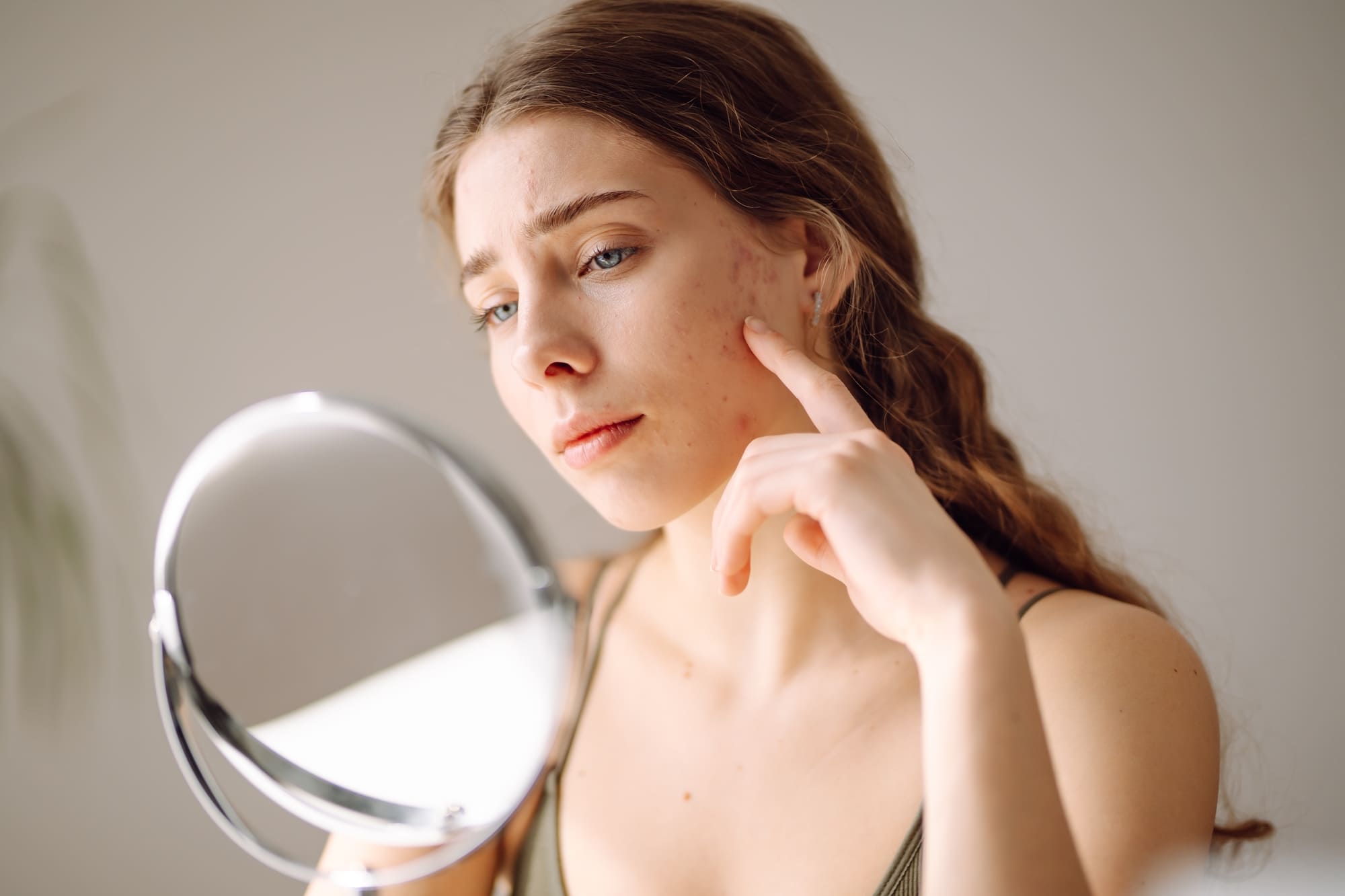Of all skin problems, acne is the most common and one of the most damaging to self-esteem. It is also important to bear in mind that it can appear at any stage of life and take various forms depending on age and origin. Therefore, in order to choose the right treatment, it is essential to identify the different types of acne and know what causes them.
Types of acne according to age
Acne is a chronic inflammatory disease that causes skin lesions such as comedones, papules, pustules, and cysts. Although it is often associated with adolescence, acne can also appear in children and adults, and its severity varies from mild blemishes to severe forms that can become infected or leave scars.
Infant acne (0–1 year)
Neonatal acne, infant acne, or acne of the infant, manifests as papules and pustules in newborns and infants and is usually related to maternal hormones.
Acne in children (7–12 years)
This type of acne appears in “early puberty” with a predominance of comedones in the T-zone (forehead, nose, and chin), mainly as a sign of the onset of hormonal activity.
Adolescents (13–18 years)
This is the most common stage in which acne vulgaris appears with comedones, inflammatory papules, and occasional nodules, due to the peak in androgens that occurs at this age.
Adults (≥25 years)
Adult acne can persist from adolescence or appear without any previous history. It is often predominantly inflammatory and located on the lower part of the face.
This type of acne can appear due to hormonal changes, stress, use of cosmetics, or genetic factors.
Acne according to symptoms
The number of lesions caused by different types of acne provides a useful guide for choosing the appropriate treatment for the problem.
Mild
Less than 5 inflammatory lesions on one half of the face. Generally, there are fewer than 10 small papules and pustules.
Moderate
Moderate acne involves between 6 and 20 inflammatory lesions on one half of the face. It can also affect the trunk, and there may be a total of between 10 and 40 papules, pustules, and comedones.
Severe
In severe acne or grade 3 acne, there are between 21 and 50 inflammatory lesions on one half of the face. It can also affect other areas such as the chest and back, with between 40 and 100 papules and pustules, with deep, infiltrating nodular lesions.
Types of acne based on causes
The causes can also help us identify the different types of acne. In this sense, these are the most common types of acne.
Hormonal
Related to androgen fluctuations (puberty, menstrual cycle, PCOS). In hormonal acne, inflammatory lesions predominate on the jaw and chin.
Summer (summer acne)
Outbreaks of papules and pustules are common after intense sun exposure, which is exacerbated by other factors such as sweat, heat, and occlusive cosmetics.
Medications
A type of acne induced by corticosteroids, lithium, and antiepileptics. In this case, a mild to moderate acne problem appears, with a predominance of comedones.
Acne treatments
The Purifying range from Toskani offers specific solutions for oily skin prone to different types of acne.
- Purifying Intensive Serum. Light, oil-free texture. Regulates excess sebum, reduces pimples and blackheads, calms inflammation, and accelerates healing. Ideal for enlarged pores and active lesions!
- Purifying Cream. Complements the action of the serum with sebum-regulating and soothing ingredients, prevents future lesions, and minimizes irritation.
- Saliforo. 2% salicylic acid solution: superficial exfoliation that stimulates cell renewal, improves texture, reduces redness, and evens out skin tone.
- Salisome Duo. Liposome chemical peel with encapsulated salicylic acid that renews and mattifies without causing post-treatment irritation.
- Purifying Cocktail. Intensive treatment for rapid reduction of imperfections and sebum normalization.
In addition to these Toskani products for acne, it is a good idea to incorporate the following care into your beauty routine:
- Gentle daily cleansing to remove traces of cosmetics and sebum without damaging the skin barrier.
- Regular exfoliation (physical or chemical) to unclog pores.
- Oil-free sun protection to avoid worsening inflammation and breakouts. The fluid creams and stick from the Sun Shield-D sun care line are non-comedogenic, helping to keep pores clean and prevent breakouts. They are especially recommended for people prone to acne.
- Consult a dermatologist to evaluate isotretinoin or hormonal treatments in severe cases.
With these guidelines, you can accurately identify your type of acne and apply the most appropriate acne treatment, achieving more even and healthier skin. Say goodbye to blemishes and regain your confidence!


